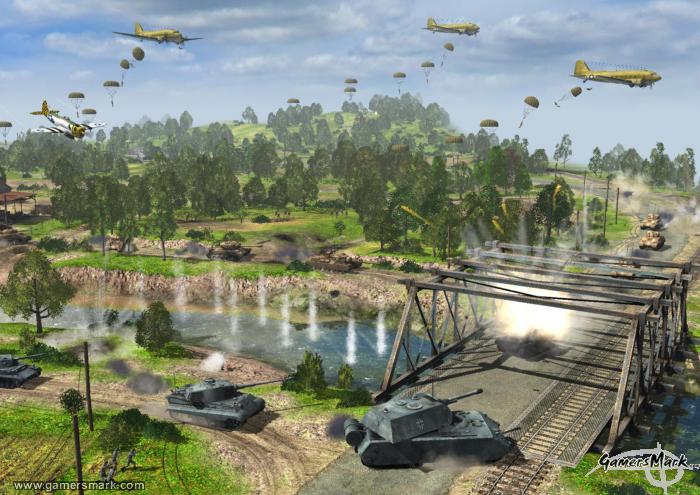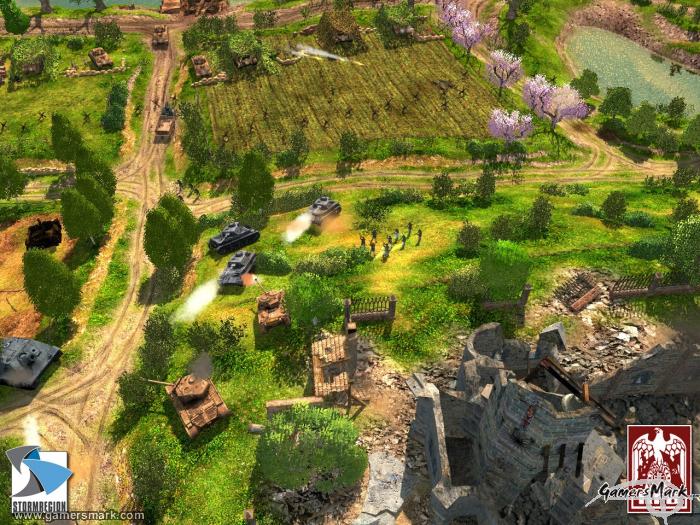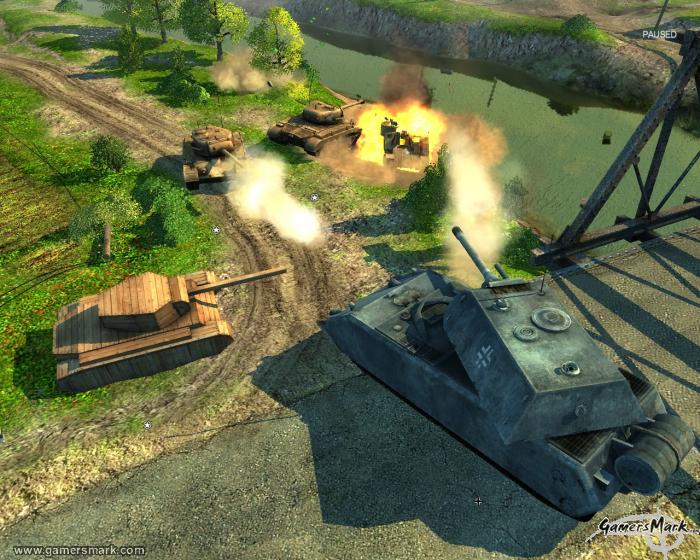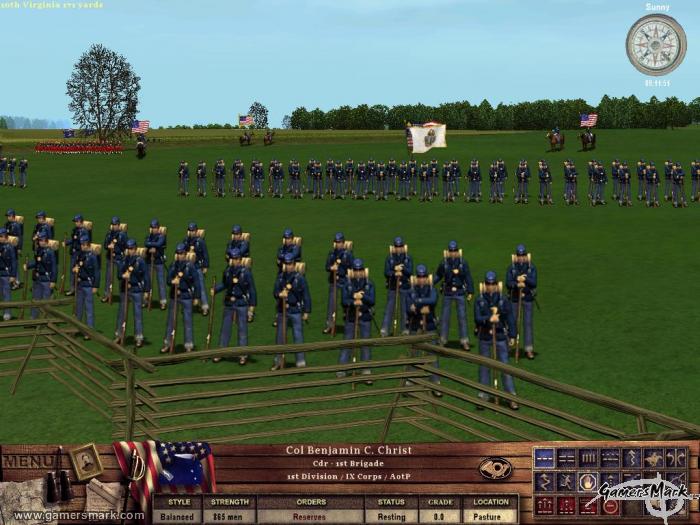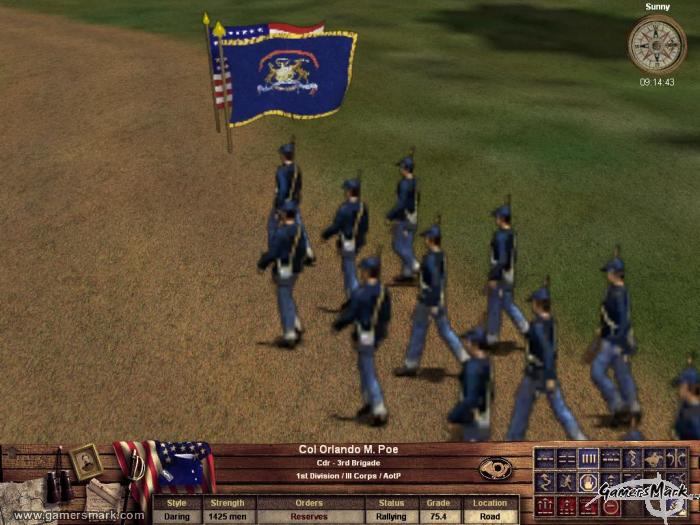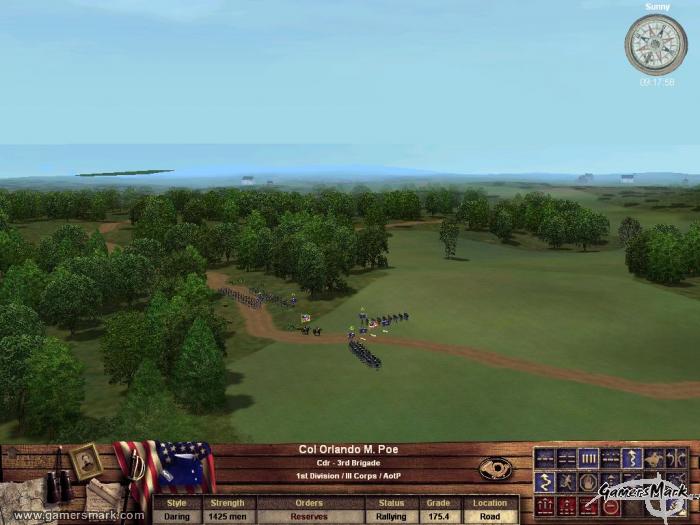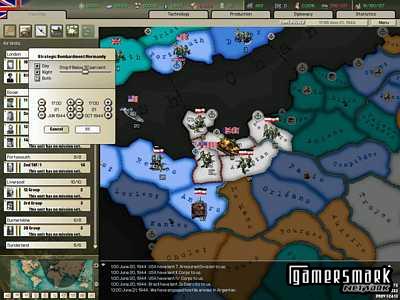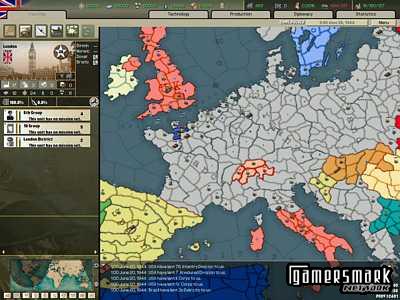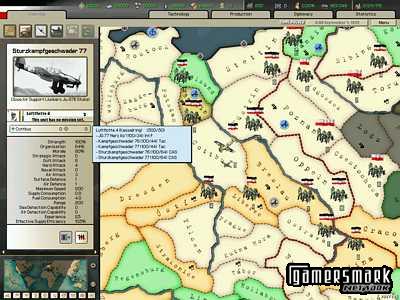Developer: TaleWorlds Entertainment / Publisher: Paradox Interactive || Overall: 9.0/10
Mount & Blade: War Band is a medieval combat strategy RPG developed by TaleWorlds Entertainment. War Band is a unique blend of strategy, adventure, and mounted combat that makes it a wonderfully pleasant game play experience. However, there are a few issues that plague the game, namely with its presentational and user interface, which can put a damper on its enjoyability.
War Band takes place on a medieval continent named Calradia. On Calradia, there are six different factions, whose leaders all claim they are the rightful rulers of the whole of Calradia. Who you choose to begin the game with has less to do than where they actually are on the continent. Every new game starts you off being attacked by assassins in the trade district of the major city of the faction you select. After you win or lose this fight, a tradesman comes and saves you. He pleads with you to help him save his brother that has been kidnapped by the group of people who attacked you. If you choose to save him, you aim to gain a small sum of money. If you don’t, you’re able to do whatever you like in the game as you please.
War Band takes it upon itself to let you roam around the sandbox it has created as soon as it can. In fact, most of the game itself is free form and there is basically no real story or stringent quest structure to be had. Events such as tracking down bandits and recruiting new members to your party become the story itself, as you fight battles and run around Calradia doing the biddings of Kings and their vassals, if you choose to do so. If you progress far enough in gaining the respect of a King, you will eventually be asked to become a King’s vassal, and be awarded pieces of land acquired from your enemies. You can also be asked to fight alongside the King in raids on castles, or come to the assistance of your allies against mountain bandits or enemy armies.
Another way to play War Band is by going against the current political structure in a certain area, and supporting a suitor that claims ownership of a throne. By supporting these suitors, you are able to work to overthrow a King and make the person you are supporting become King or Queen in their stead, along with all the benefits and consequences that go along with that. You are also able to establish yourself as a King or Queen and attack castles, acquiring fiefs for your own purposes.
The basis of the game itself is very interesting for gamers who have played games such as the Elder Scrolls and Civilization. However, the game play itself has a couple of issues. There is not a lot of explanation as to how to do certain things in the game, such as establishing yourself as a King or Queen. It is hard to find much information on it.
A lot of quests are unnecessarily vague. It may take Internet research to figure out what to do or how to do a quest. For example, you are told to bring some cows to a small town that has had their herd stolen by local bandits. The only way to get cows is by stealing or buying cows from another town and bringing them to the first. However, when you get this quest, that isn’t mentioned at all. They tell you to “get some cows” and are left to your own laurels to figure out how to do it. Unless you somehow happen upon the prompt to buy cows, it can be frustrating to figure out how to do this the first time. Another instance where the game can be unnecessarily harsh is when a local Guild Master gives you a quest to find a Bandit’s Lair and expunge the threat. The Bandit’s Lair itself does not show on your map until you are directly above it. Considering the map of Calradia is huge and your unit is very small, it can take a certain amount of luck to happen upon the lair. Quests like these do not lend themselves to making the game user friendly.
Combat itself is quite fun, and the large battles that can be had are quite enthralling. Most of the time you will be fighting in first-person, but third-person is another option, and depending on the situation it is easy to switch back and forth. Your character is able to use any weapon in the game, so it comes down to personal preference. One handed, two handed, and throwing weapons are available, in addition to shields, bows, crossbows, polearms, and maces. There are four weapon slots for your character, allowing you to have a variety of weapons for the different situations you might be in.
Combat can take place in a variety of places, but most happen in the open field. The open field combat stages take place on a map that closely reflects the type of area you are in, such as a mountainous area or in the woods. Smaller stages take place on the beach, a mountain pass, or in a town. In all of these situations, you are able to bring allies along with you, and as you grow your party larger and they become more powerful, you will begin to trump your enemies with ease — until you eye larger and more powerful enemies. Simply put, the combat is the shining star of War Band and is what keeps you coming back for more.
When in combat, you use your mouse to change the direction you are attacking from. To hit someone from above, you bring your mouse back towards you. To hit them from the right, you move your mouse to the right. You move using the WASD buttons, but there is no sidestepping with Q and E. Q will bring up your quest log and E will kick in front of you. If you are used to sidestepping, this can be annoying. The objective of combat is to basically kill or knock unconscious all of your enemies. Once that is accomplished you win. If your army is quashed in the same manner, then you lose. If you are knocked out before the battle ends, your army will fight at a lesser capability, and become more susceptible to losing. It is very important to not only keep yourself alive through the whole battle, but to also help your army in the fight. This brings a delicate balance between risk-taking and being careless and running into a group of enemies with spears. You are also able to give your army orders to follow you, to charge, or to flank your enemy, among other commands. These commands allow for strategy to be built around the situation at hand.
Graphics can take a big part in whether or not someone can be interested in the game without knowing anything about its game play. With that being said, the game is downright ugly, and is about ten years behind. The character models aren’t animated very well, many textures are smudgy, and just about everything has sharp edges. While good graphics and animations aren’t required to have a fun game, it definitely makes it less painful to look at. The unequivocally worst characteristic of this game is its graphics. The second is the user interface.
The user interface is sorely in need of improvement. When selecting from a long list of responses, it can be hard to figure out or remember which option you had last selected, so if you had to talk to the person again to get something done you may be confused as to which you had selected previously. When looking through the in-game reference manual, it can be hard to find what you are looking for, stumbling across many pages and guessing what you might be looking for at times – this ties into finding out what to do for quests.
While navigating the map, it can take a very long time to travel and to even find where you’re trying to go. There are no user-friendly options for accelerating travel speed, and sometimes you’ll be travelling for ten minutes straight before getting to your destination. Over time, this adds up, and less time is actually spent playing the more interesting parts of the game. Towns are also designed in a confusing manner, making them hard to navigate as well. Each town has one leader that you are able to acquire quests from, but they are very hard to distinguish from other random town members at times. The absence of a mini-map with markers while in towns would make this an easier exploit – otherwise, you are left to run around towns and talking to random people in hopes that they are the Guild Master or Town Elder.
Another user-friendly improvement that is needed would be with party management. As you gain heroes to tag along with you, they bring their own blank slate for you to skill them up as they level. The point of your party heroes is to fill in the gaps as far as your party skills go. While this makes sense in theory, the execution doesn’t lend itself to helping the player figure out which skills are actually going to benefit the party or which ones another hero already covers. Some sort of interface that tells you which party skills you are missing or have covered already as you are deciding which skills to level your characters with would make it a much more pleasant experience. Otherwise, you have to resort to creating a small spreadsheet to figure it all out.
Party management is also irritating when it comes to managing your heroes’ equipment. Instead of having one simple interface to tab through each party member’s equipment screen, you have to talk to him or her individually and ask to see his or her armor. If you came into a number of upgrades to compare to what your party members have already, it is very tiresome to click three times to see one equipment screen, and then escape out of it, and then do it again for the next party member. Most party-based RPGs have solved this problem by making it easy to switch to the next party member’s equipment/skill screen without having to exit back to the party screen, and War Band should have had something like that implemented. Wasting time on obstacles like these can detract from the game’s enjoyment.
The inventory system also suffers from user interface issues. You have a certain number of slots for inventory that can increase via skills. Once you get to a large inventory capability, it can be easy to overlook what you may or may not have in your inventory. A sorting option is desperately needed to re-sort your items and fill in slots from top to bottom. This would prevent having to manually move each item, one at a time, from the bottom of the list to the top. Another missing feature is a “take all items” option after defeating an enemy. Instead of stuffing everything you can into your bags, you must click each item, one at a time, to loot them. This, again, wastes time and energy going through and clicking everything you may want without automatically looting everything you can fit into your inventory. In addition, inventory squares are fairly huge and could have sized down a little bit to accommodate being able to look at what you have in an easier fashion.
There is a multiplayer aspect to the game, but the most common are deathmatch or castle sieges. The multiplayer modes are more akin to Counterstrike or other objective-based multiplayer games. Some sort of a co-op mode for the single-player game would be nice, but would have unique challenges to overcome, considering much of the game itself is traveling and quest-taking, and that wouldn’t exactly be very fun to experience alongside a friend for very long.
War Band also allows for modding. If you find an interesting mod available, you are able to import it into the game and run it. While War Band doesn’t have as many interesting mods as the original Mount & Blade does, there are a couple available that may be worth a try. These mods change the single-player game in ways that the overall objective changes, or new armor/weapons are added. Like many other PC games that allow modding, it creates a community that is involved with making these mods and keeps people interested in the game itself, as its game play could radically change with a new mod.
As a cohesive whole, Mount & Blade: War Band has many interesting and fun features. But if one thing of the game needs to be said, it’s that it mainly suffers from user interface design. An overhaul in its user interface would severely be recommended in any future game in the series, and would lend itself to making the experience much more pleasing. War Band is an activity that you can sink many hours into, and not realize where the time has gone. At first glance, the game can give the wrong impression, but War Band is definitely a title to experience.

